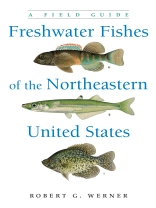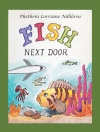At least 162 species of fish are known to live or spawn in the freshwaters of the Northeast, representing twenty-eight families and sixteen orders. This diversity springs from an enormous variety of freshwater habitats, including some of the largest lakes in the world; vast and complex river systems; deep, clear lakes in Maine and the Adirondack Mountains; and myriad small lakes, bogs, marshes, and streams that dot the northeast. In the most comprehensive book of its kind, Robert G. Werner offers a thorough survey and analysis, in accessible field guide form, of the region’s abundant freshwater fishes.
Werner’s discussion of the geological history of the region serves as a critical background for understanding not only the fascinating habitats of fishes but also the extensive watersheds and drainages of the region. A reference list provides up-to-date sources, and the species descriptions contain the latest relevant data and research on specific fish. In addition, vivid color plates and extensive line drawings illustrate fish morphology and the distinctive natural colors of numerous species. As a standard resource, this guide will attract a wide audience. This book will be useful to biologists, ecologists, and zoologists and will have an indispensable appeal among anglers, environmentalists, and fisheries professionals.
Om författaren
Robert G. Werner is the author of two books, Freshwater Fishes of New York State: A Field Guide, also published by Syracuse University Press, and
Fishery Science: The Unique Contribution of Early Life Stages (with Lee Fuiman). He is professor emeritus at SUNY Environmental Science and Forestry and was the director of the St. Lawrence River Biological Station as well as codirector of the Great Lakes Research Consortium.












